Author: Quinrose
Manga-ka: Soumei Hoshino
Publisher: Yen Press
Rating: Older Teen (16+)
Release Date: June 2012
Synopsis: “Alice is having a nap in her garden when suddenly before her there appears a young man with rabbit ears! He whisks her away to a fantastic (but dangerous) world that seems straight out of a fairy tale, but one where every resident brandishes a weapon…Will Alice ever find her way back home? “
The plot of this story feels like a no-brainer based on the source material – a young girl transported to a magical world who meets an assortment of strange men and women. Harem set-up perfection, right? You guessed it, they all fall in love with her. Not nearly as pervy as CLAMP’s Miyuki-chan in Wonderland, and impressively more twisted in some ways than the original, Alice in the Country of Hearts takes a harem twist on an old classic and yet makes it so much more than you’d expect. Packaged pretty by Yen Press and released all at once for your curious convenience, Alice in the Country of Hearts is a trio of books worth seeking out.
Alice’s story is quick to take off. Briefly we see her seated in a quaint garden being read to by her kind, sweet, pretty and thus intentionally shallowly fantasized older sister. Moments later Alice is being whisked away by none other than Peter Rabbit, only now Peter Rabbit is a full grown man in a suit who simply will not take no for an answer. Into the hole they go and out they pop in Wonderland, a world populated by strange individuals who kill each other for fun. Most also find Alice the best thing since their ability to manifest magical, murderous weapons from nothing.
For the sake of the plot moving forward, Alice takes most things in stride, but I was glad to see her protest a sane amount, especially at the beginning. She questions, she refuses and she even wisely hides sometimes. There’s still a level of fear missing from her that one would expect more when watching people slay and shoot at the drop of a top hat, but, to be fair, she does believe it’s all a dream. What else is there to assume? Alice is fortunately both curious and attentive so she quickly learns that in Wonderland – notably the Country of Hearts where she has found herself – the area has been split into warring factions between the Queen of Hearts, and a mafia run by the series’ Mr. Dark, Rude and Mysterious – Blood Dupre. One of the first places she finds herself is a clock tower in the neutral zone, and in no time she’s made it her home away from home.
Of the different characters in the story, I favoured two above all. Both, to my glee, ended up being some of the most relevant – Julius of the Clocktower and Boris, the Chesire Cat. My like of them must mean I’m rooting for Alice’s survival too as they’re some of very few characters who haven’t tried to kill her (or speak of doing it). In a world where everyone seems destined to love her, I felt these two were the most natural – they got close to her in different ways and seemed attracted to her for different reasons. Plus in ways that bettered them more clearly than any others. That and I suppose I’m a sucker for the kind, hardworking, long-haired, tailored-suit wearing loner types so yay on Julius. Boris was just adorable and far less vexing than any other version of the Chesire Cat adaptations have presented. He just has kitty ears, really. Well, that and a playful cat nature that errs on the side of naively sadistic. Other notable characters in the story include two young violence-obsessed twins, Tweedle Dee and Tweedle Dum, Mary Gow Land (who runs a large amusement park), Elliot the March Hare and Ace, a knight with an impressive ability to get lost going anywhere.
I loved the insinuation rather early on that everything in Wonderland is a result of Alice’s subconscious, even if it is a classic and expected assumption on readers’ behalf based on the original Alice in Wonderland story. It is all a dream, after all… right? The second volume is where things really get interesting. The introduction of the character, Nightmare, a man who visits the characters in their dreams, sets into motion other theories – that Wonderland exists without Alice, that she’s not the first outsider to visit there and that her time there is not only poignantly relevant to the people she meets, but tied to events that occurred before we even began the story. Throughout these chapters whenever she tries to remember something important, Nightmare assaults her with headaches and momentary blackouts, leaving her momentarily stunned and then forgetting she even forget something in the first place. Mysterious!
This is also the point in the story where I forgave it for its harem-aspects. Watching a group of individuals fall haplessly in love with the same person, for little reason other than quirky cander, isn’t usually my kind of entertainment. Suddenly however, in Alice in the Country of Hearts we’re gifted with the notion that they all simply can’t help it – literally. She’s an ‘outsider’, a force in itself. Her reactions, her ideals, her very heartbeat are so foreign to the denizens of Wonderland that they’re drawn to her – drawn to her so much so that it’s suggested that none have a choice but to love her. It will happen, and even knowing it advance won’t allow them to avoid it. This fate weighs heavily on some more than others. That we then see some characters even attempting to fight these new unvalidated feelings puts an entirely new twist on the situation.
At this point in the story, Alice has been living comfortably with Julius in the clock tower for a while. She has come to learn and accept a dark truth about his work there. It gives her a better understanding of the mindset Wonderland’s inhabitants have and why they hold such little value in their own lives. It’s an interesting thing to think about, how these “face” characters (those with names and distinct personalities) seem to hold their lives, and those around them, in the littlest regard when they themselves have the most to lose. Granted, that’s an oversimplification of their role in this world which also has the ‘faceless’ cards – background characters who literally have no face and apparently all blend together in non-importance. The lead characters, Alice excluded, treat them like objects but even if they’re not fleshed out, they still seem to have a lot more personality than anyone gives them credit for . It makes the nonchalance of some events all the more unnerving. You know, like the bloody group massacres on a regular basis.
While creeped out by the first volume, and struggling to get past my aversion to the harem concept, by the end of volume two I was hooked. The story gave a really neat basis for just about everything I took issue with originally. It also tied in some really twisted elements that made the weird and abrupt violence of some characters more than just gratuitous shock factor (though that does continue working in its favour). The character, Ace, makes these scenes especially scary as we watch him morph from a smiling, easily lost person to a smiling, easily lost person with death in his eyes and blood on his sword.
There’s some disorientation caused by the end of volume two and the start of volume three, however. Volume two ends on a cliffhanger but volume three starts up as if it’s already resolved and we’re onto something else. It’s like a short story was slipped in there, but it reads no differently from the rest of the chapters and, unfortunately, doesn’t have an end. Is there another book where this finishes..? Alas this isn’t the only time we’re given a bit of a cut-off slap.
I was surprised and sad to discover volume three was the end of this series, and to my disappointment, the ending hit me with the opposite effect of what I’d gotten from volume two. Instead a ‘Wow!’, I let out a ‘Huh?!’. Suddenly I’m back on the fence – do I really like this?? I still do, of course, but with a lot of frustrations regarding the end. I wasn’t surprised to see the story push Alice into ‘getting with’ one of the guys, it is based on a reverse-harem sim where the coupling is 80% the point after all, but the person that Alice ends up sharing the closest thing to a mutual love confession with is the one who it seems least believable (presuming she’s not a masochist). I suppose that alone should have been a tip off. But my personal animosity to the pair wasn’t my real issue with the cheesy, slapdash ending.
The story had a pretty open-end to it – the kind that says ‘and the story continues…!’ more than offering any resolutions. Considering the story up until now, this would’ve been alright if not for the fact that despite it’s climax and conclusion, all the plot elements I found so engaging were left almost entirely unaddressed. In fact between Peter Rabbit’s further outcries of love for Alice, and Nightmare’s subsequent teasing about past events that lead to it, I was left with more questions than answers when I finished volume three.
What actually happened to Alice’s sister? What events occurred with Peter Rabbit before he whisked Alice away? What is Alice forgetting? And what real role does she play in Wonderland? We’re given enough to make guesses, some seemingly more obvious than others, but nothing is ever actually said. I feel cheated and sort of offended, like the romantic pay-off (if you like that couple anyway) would be more than enough to sate my desire for an actual pay-off with the storytelling. Not so, Quinrose, not so. We’re lead so close to the time and the place that we thought all along would be the big reveal moment… then abruptly yanked away from it, like the author just spontaneously changed their mind and decided to watch the readers writhe.
Alice in the Country of Hearts is just one storyline out of several made into manga form. Seven Seas, for example, has licensed a couple other one-shots related to it. I’m curious if more of the plot elements are expanded in those, but at the same time doubtful if this version deemed as the ‘main’ storyline simply leaves them hanging like this. Then there’s the fact these are all based on a game. Is that why the manga is left hanging so wide open? It would be one heck of a marketing tool, yet to an audience with no access to the source material it’s derived from, the end result is just frustrating.
But… it makes me want more, and that’s a sign the series did good even if I’m going to hate it for a little while. Soumei Hoshino’s artwork is also a shining feature that will stick out positively in my mind long after to counterbalance. She brings exceptional pretty-boy life to the characters and an empathetic charm to Alice that makes her entertaining to watch run about. I could only find info on one other series’ drawn by her – currently on-going and not licensed in English – but I certainly hope this isn’t the last we see of them available in North America. For an artist who seems new to the medium, it’s done really well – from the action, to the design renders, the careful screen-toning and the well paced panels.
Yen Press doesn’t waste a shred of paper with showing off the artwork either. These new omnibus editions of the series are gorgeous. I couldn’t imagine someone handling them better. The trim size is large, the design work is beautiful (with well used spot-varnish finishing for the print-quality lovers out there!) and each book has a number of full-colour, glossy illustrations. Volume three even has a gallery’s worth at the end. All three volumes look and feel so great in hand, and at two-volumes per book, they’re well worth the purchase. There are books you buy just to read and others you buy specifically to keep and collect, and these fall in the latter. Yen Press released all three omnibus editions at once too so if you finish one and can’t wait for the other, worry not because you don’t have to!
At the end of this winding road, I feel as disoriented about Alice in the Country of Hearts as Alice herself very well might. I love some characters and am annoyed by others. I am wildly curious about so many things but fearful of their outcome, and more so by the offering of no outcome at all. I became enamoured with the series mid-way, and while the ending left me cold, it wasn’t enough to dampen my spirits towards it completely. I look forward to re-reading the series again down the road and seeing how different things seem and what other elements I might notice, especially if by then I’ve checked out the several spin-offs on their way to store shelves this summer. Alice in the Country of Hearts proved itself far better than its synopsis had me expecting and despite it’s short-comings, it was a really fun read and a very pleasant surprise.
– – – – – – – – – – – – – – – – – – – – – – – – – – –
Books provided by Yen Press for review purposes


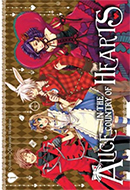



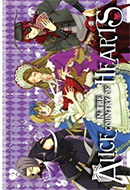
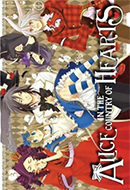
 Follow
Follow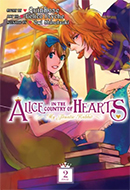


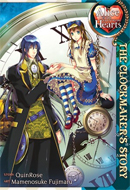





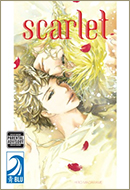








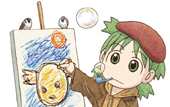









[…] Pattillo on vols. 1-3 of Alice in the Country of Hearts (Kuriousity) Kristin on vols. 11 and 12 of Bakuman (Comic Attack) Sheena McNeil on vol. 44 of […]
[…] Lissa reviews Volumes 1-3 of Alice in the Country of Hearts. […]
[…] a bit weird coming from having recently read Yen Press’s release of Alice in the Country of Hearts to Seven Seas’ Alice in the Country of Clover. Both are the same story continued from a […]